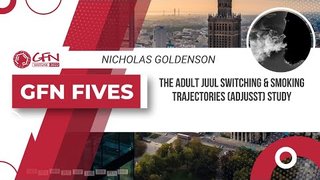Testing E-Cigarette Gateway vs Diversion Scenarios Against Reality Using Simulation Modeling - Arielle Selya
Competing evidence exists regarding whether e-cigarettes are a "gateway" to cigarette smoking among youth, or whether e-cigarettes are offsetting cigarette use among adolescents who have a propensity for tobacco use (any product). Population-level trends can be used to test the predictions of these competing hypothesis. A simulation model is developed to replicate historical trends in youth tobacco use through 2010 (before e-cigarettes became available), and gateway/catalyst and diversion effects are "switched on" in the model, to examine whether each scenario is consistent with observed data. The base-case model (no catalyst or diversion) overpredicts the actual number of smokers in 2020. The catalyst effect even further overpredicts the actual number of smokers; thus catalyst is inconsistent with real data, as it predicts more smokers but in reality there are fewer. A diversion effect with an exponential decay constant of 55.4% e-cigarette users/year is necessary to explain actual data. Though this simulation can't prove that diversion is actually occurring in reality, it provides a "reality check" showing that diversion far better explains actual data on youth tobacco use.




